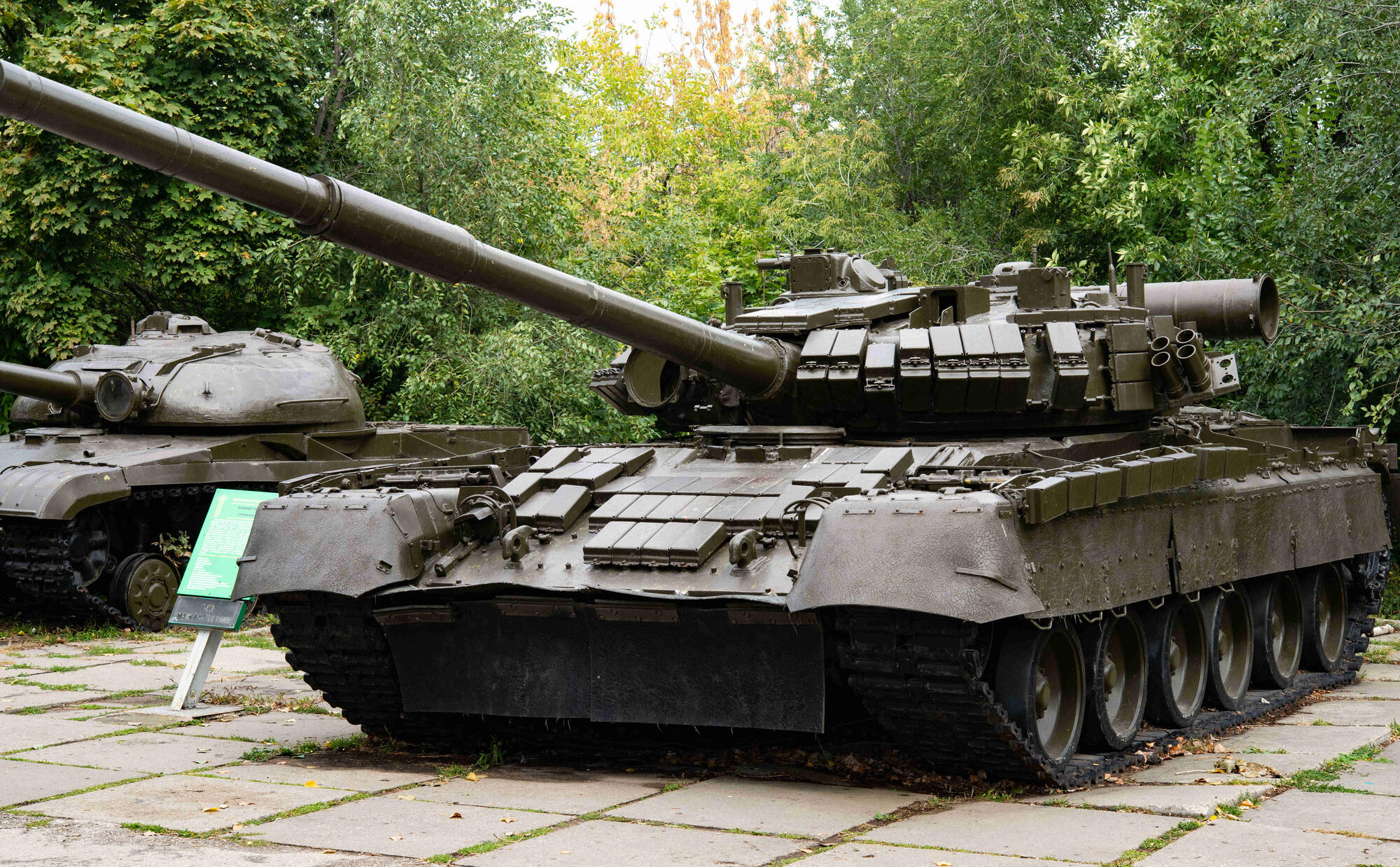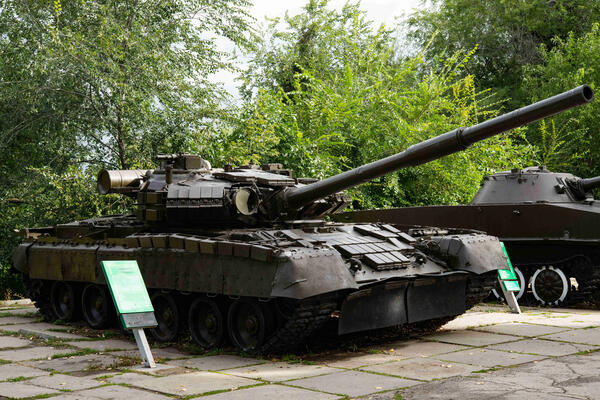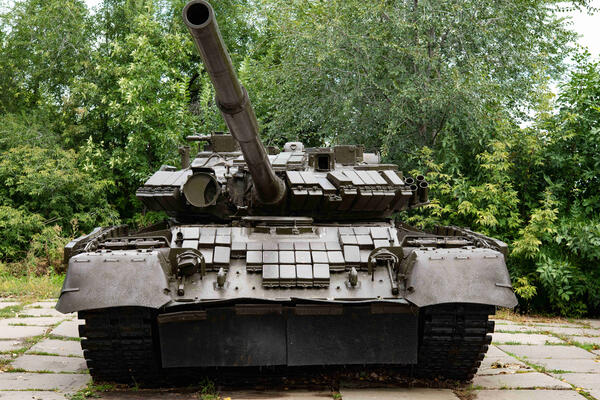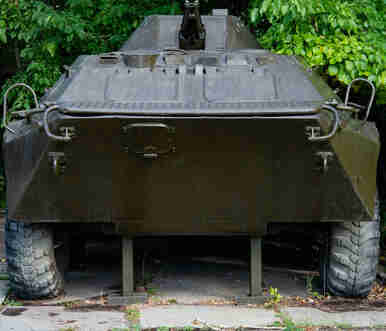The T-80 main battle tank was developed in the Design Bureau of Transport Engineering of the Kirov Factory in Leningrad. The group of designers was led by Nikolay Sergeyevich Popov. The first series of tanks was produced in 1976–1978.
The main feature of the T-80 was the gas turbine engine, which was used to power the tank. The T-80 tank was designed to lead offensive and defensive battles in various geographical and weather conditions.
To effectively target enemy troops, the tank was armed with a 125mm smoothbore cannon and a coaxial 7.62mm Kalashnikov machine gun (PKT). The armament of the combat vehicle also included a 12.7mm anti-aircraft machine gun complex “Utyos” (also known as the NSV) mounted on the commander’s turret.
The anti-aircraft machine gun was designed to fire at air and ground targets at a range of up to 2 km and allowed all-around traverse. The smoothbore cannon could hit targets at a distance of up to 5 km. To protect against guided weapons, a “Toucha” smoke grenade launching system was installed on the tank.
The T-80 had a comprehensive protection system against weapons of mass destruction and an automatic fire-extinguisher. The combat vehicle was fitted with night vision devices and multilayer composite armor.
The T-80 tanks first entered service with the Armed Forces in the late 1970s and were delivered primarily to Western Military Districts and foreign troops. Due to the pressurized fuel in the gas turbine, these tanks could not be used in areas with a hot climate, so they were not sent to the Southern Military Districts.
During its operational history, the gas turbine engine proved itself to be extremely effective as a power source, which allowed the T-80 tank to operate even in cold weather. In addition, the gas turbine allowed for a power reserve and a lighter weight, which were needed to strengthen the tank’s protection from anti-tank weapons on the battlefield.
The T-80 tanks were not manufactured for export and were not used in combat operations with the Soviet Army. The combat vehicles of later modifications were used by the Russian Army during both Chechen wars.
The main feature of the T-80 was the gas turbine engine, which was used to power the tank. The T-80 tank was designed to lead offensive and defensive battles in various geographical and weather conditions.
To effectively target enemy troops, the tank was armed with a 125mm smoothbore cannon and a coaxial 7.62mm Kalashnikov machine gun (PKT). The armament of the combat vehicle also included a 12.7mm anti-aircraft machine gun complex “Utyos” (also known as the NSV) mounted on the commander’s turret.
The anti-aircraft machine gun was designed to fire at air and ground targets at a range of up to 2 km and allowed all-around traverse. The smoothbore cannon could hit targets at a distance of up to 5 km. To protect against guided weapons, a “Toucha” smoke grenade launching system was installed on the tank.
The T-80 had a comprehensive protection system against weapons of mass destruction and an automatic fire-extinguisher. The combat vehicle was fitted with night vision devices and multilayer composite armor.
The T-80 tanks first entered service with the Armed Forces in the late 1970s and were delivered primarily to Western Military Districts and foreign troops. Due to the pressurized fuel in the gas turbine, these tanks could not be used in areas with a hot climate, so they were not sent to the Southern Military Districts.
During its operational history, the gas turbine engine proved itself to be extremely effective as a power source, which allowed the T-80 tank to operate even in cold weather. In addition, the gas turbine allowed for a power reserve and a lighter weight, which were needed to strengthen the tank’s protection from anti-tank weapons on the battlefield.
The T-80 tanks were not manufactured for export and were not used in combat operations with the Soviet Army. The combat vehicles of later modifications were used by the Russian Army during both Chechen wars.





